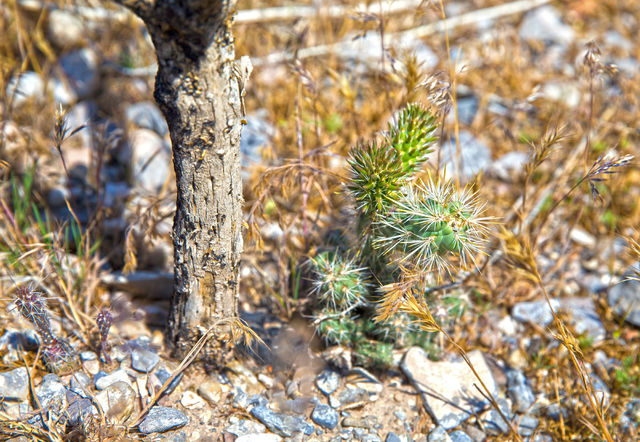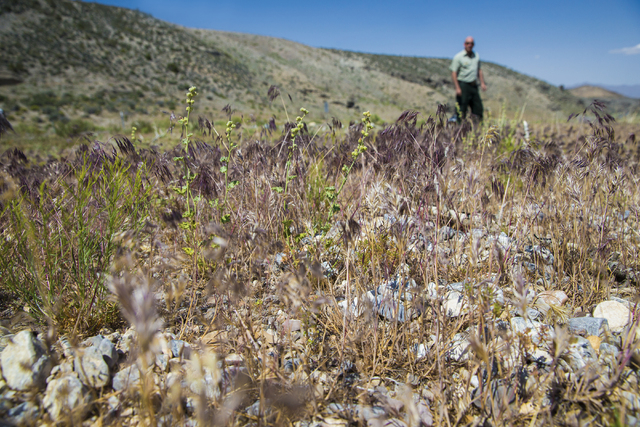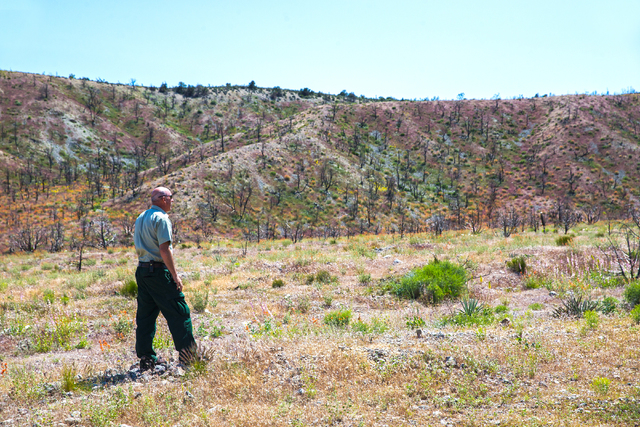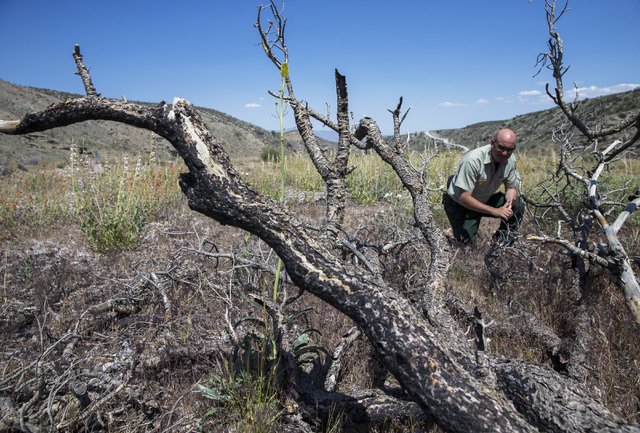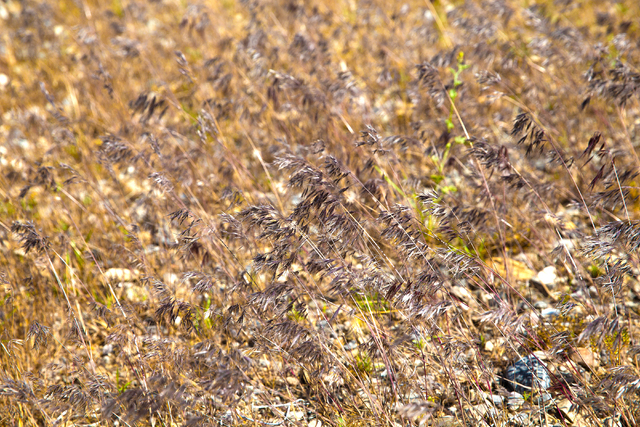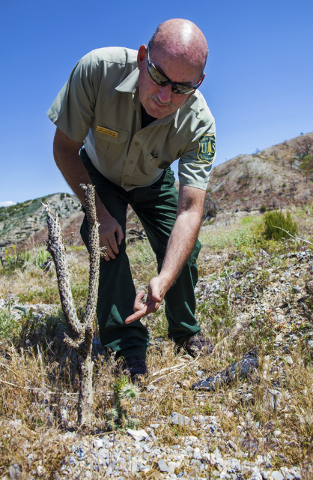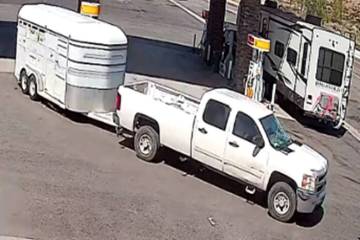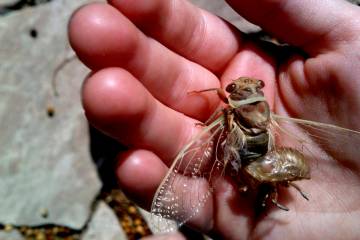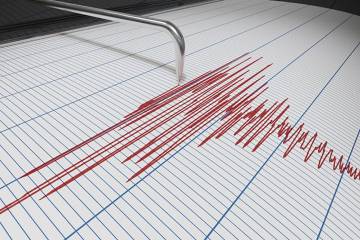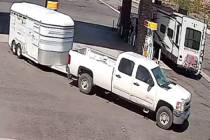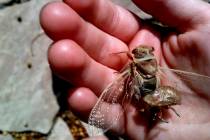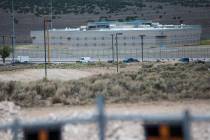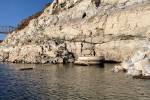Wet winter doesn’t diminish wildfire threat, official warns
CARSON CITY — If winter in Nevada is a harbinger of summer wildfire seasons, we’re damned if it’s wet and we’re damned if it’s dry.
And the upcoming fire season, which follows an average wet winter after four years of drought, could be one Nevada hasn’t seen in about a decade, wildfire experts said Monday.
“Obviously, this is an important topic,” Gov. Brian Sandoval told fire managers from multiple agencies during a briefing on what to expect in the upcoming fire season. “We have to be prepared for it.”

Over the past four years, drought that left much of the state tinder dry and ready to burst into smoke and flames didn’t produce the widespread catastrophic fires many had feared.
Not that there weren’t big fires. The Carpenter Fire sparked by lightning on July 1, 2013, in the Spring Mountains north of Las Vegas burned 43 square miles and left the rugged landscape prone to flooding and left remote communities without running water for months.
In Northern Nevada, the Washington Fire south of Lake Tahoe burned nearly 28 square miles last year.
Just because this past winter was wet doesn’t diminish the wildfire threat. Grasses and weeds that sprout with the moisture dry out and become matchsticks ready to burn when summer temperatures turn hot.
“We are seeing in the eastern part of the state an easing of the drought,” said Leo Drozdoff, director of the Department of Conservation and Natural Resources. “That comes with more fuel.”
Joe Freeland, Nevada state forester and fire warden, said the greenery amid the sagebrush “could give us challenges” when the grasses and weeds dry out.
“It’s been awhile since it looked like this,” he said.
Nevada’s worst fire season in recent history was 1999, when 1.9 million acres burned. In 2006, 1.3 million acres burned, but since then, the state has largely escaped widespread fires. Last year, wildfires burned 43,000 acres.
Fire managers predict June could bring an above-normal threat of significant wildland fire to the Spring Mountains area of Southern Nevada.
“It’s kind of a catch-22,” said Ray Johnson, fire prevention officer with the U.S. Forest Service on Mount Charleston. “People think, ‘Oh, it’s raining, that’s good,’ but all this rain has increased the amount of grass that’s cropped up a little bit.
“When that dries out over the summer, there’s some potential for some fire spread,” Johnson said. ”
But midsummer, in July and August, the main threat moves to the state’s northern portion.
In the Sierra Nevada, a normal snowpack means smaller vegetation will be able to suck up needed moisture and will be less flammable. But big timber is still stressed from years of drought. In southern portions of the Sierra, millions of trees are dead or dying from disease and insect infestation, making them more prone to fire.
John Ruhs, state director for the Bureau of Land Management, said the federal agency that oversees millions of acres of largely sagebrush habitat in Nevada will “aggressively attack” every fire start to protect the public, sage grouse habitat and other natural resources.
Chris Smallcomb, with the National Weather Service in Reno, said forecasters can predict dangerous fire weather, whether it be strong winds or potential lightning, a few days out.
“Can we predict human-caused starts? No,” he said. “We’re not trained in forecasting stupid.”
Sandoval said he was pleased with the coordinated preparation by local, state and federal agencies to “hope for the best and plan for the worst,” and was confident they have the needed staff and equipment for the upcoming fire season.
He also praised firefighters and managers, saying it was because of “more skill than luck” that Nevada has dodged a fire bullet the past several years.
Contact Sandra Chereb at schereb@reviewjournal.com or 775-461-3821. Find @SandraChereb on Twitter. Contact Rachel Crosby at rcrosby@reviewjournal.com or 702-387-5290. Find @rachelacrosby on Twitter.
Fire restrictions on Mount Charleston are set to start early June. Restrictions include:
-No cooking or camping fires outside of designated picnic or campground fireplaces
-No smoking except within an enclosed car or in areas barren of vegetation
-No driving in areas without paved, gravel or dirt roads, and no driving without an ax, shovel and at least a gallon of water
-No welding
-No fireworks




